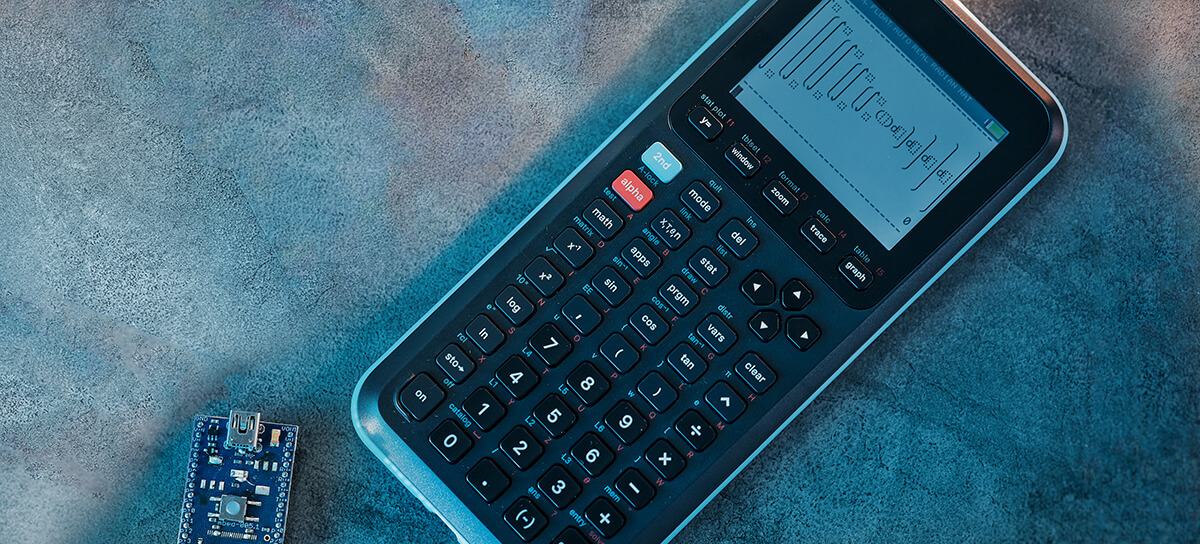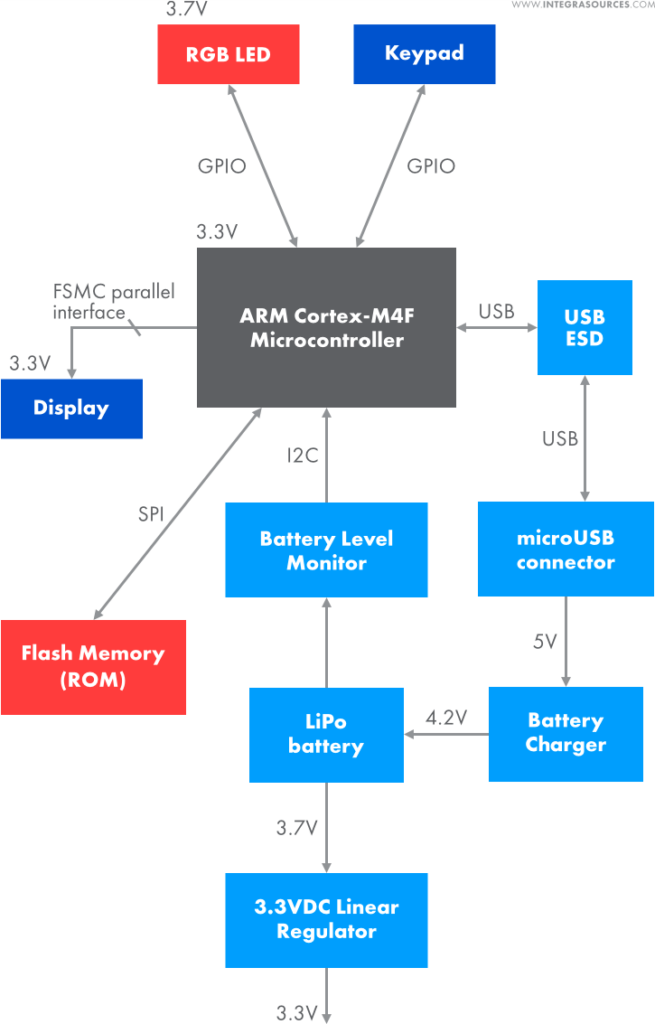This website uses cookies so that we can provide you with the best user experience possible. Cookie information is stored in your browser and performs functions such as recognising you when you return to our website and helping our team to understand which sections of the website you find most interesting and useful.
Graphing Calculator Development
Backstory
Graphing calculators have evolved far beyond basic computation. They now enable complex graphing, data handling, and integral calculations, broadening how math is taught and learned.
Users can program custom routines to tackle advanced problems. Teachers use these devices to connect with computers and facilitate classroom networking. Changing market trends open doors for modern, inspiring calculators that enhance education at every level.

Request
Our client from the educational electronics sector set out with an ambitious vision: to develop a graphing calculator that could rival the best on the market.
The client’s key requirements included:
- Enhanced capabilities: natural formula entry, statistical functions, matrix operations, graphing, plus programming support.
- PC connectivity and networking for data exchange and assignment verification.
- Cross-platform software for device management and firmware updates.
- An emulator enabling calculations without the physical device.
- Intuitive UI and a bright, large color screen to integrate smoothly into learning environments.
- Special exam mode blocking access to unauthorized features.
- High precision and reliability, critical for academic settings.
- Compliance with electromagnetic compatibility standards for FCC approval.
Our team kicked off the project by thoroughly gathering and analyzing functional and technical requirements. We also studied the competitive landscape.
Our engineers selected a reliable component base and planned to use the STM32F4 microcontroller with Cortex-M4. However, COVID-19 disrupted supply chains, forcing us to explore alternatives. Collaborating with the client, we chose the GD32F470ZKT6—a Chinese microcontroller closely matching STM32’s specs.

The calculator we built is sleek and ergonomic, measuring 190x80x12 mm (7.5x3.2x0.5 inches) with a vibrant 2.8-inch color screen. Its lithium-polymer battery ensures extended use on a single charge.
We intentionally left out Bluetooth, Wi-Fi, and games to keep students focused. A special exam mode with restrictions can be activated on the device and only disabled via the teacher’s computer.
We’re especially proud of natural input support—formulas and symbols appear just as users expect. The screen features light and dark modes to protect eyesight and save battery.
We developed our own programming language, IS Basic, added MicroPython, and included a built-in code editor. Users can code directly on the calculator or on their PC. Our team created cross-platform desktop apps for file transfer and firmware updates.
Integra’s engineers built emulators for Windows, Linux, macOS, and a web version so users can solve problems without the physical calculator. The web app will be hosted on the client’s site with secure, paid access to reach a wider audience.
Major Issues Resolved

Floating-Point Rounding Error
Our team ran into the well-known floating-point rounding problem caused by binary storage formats, leading to precision loss. Since accuracy is critical for a graphing calculator, we integrated Boost’s decimal library to perform exact decimal math, trading a bit of speed for precision.
Wide Range of Math Functions
Developing an extensive set of math functions—from simple calculations to complex integrals and derivatives—was a major challenge. We focused on intuitive formula input and stable, error-free operation, critical for effective learning.
Leveraging deep expertise in advanced math and rigorous modular firmware testing, we built a dependable and precise calculator.
IS Basic Programming Language
Creating a custom programming language was another challenge. We developed IS Basic, a flexible and user-friendly language that lets users write programs within the calculator’s scope.
Migration to GD32 Microcontroller
When supply issues forced us to replace STM32 with GD32, the team had to learn a new platform.
GD32’s flash memory is split into fast and slow sections, requiring firmware architecture changes. We placed frequently used code in fast memory and the rest in slow memory to maintain performance and stability, making the most of the microcontroller’s features.
FCC Compliance
During FCC testing, our first board iteration failed to comply with electromagnetic interference standards. Our engineers focused on optimizing the microcontroller, particularly by adjusting signal slew rates on pins interfacing with external RAM. This smoothing stabilized signals, enabling the updated calculator to pass FCC testing successfully.
The Scope of Work
- Schematic design
- PCB layout and assembly
- Prototype testing
- System debugging
- Firmware development
- Cross-platform desktop application and emulator development
- Web emulator development
Technologies
- Altium Designer for PCB design;
- Custom firmware is created with C++, Visual Studio IDE, CMake cross-platform tool, and GCC compiler;
- GD32F4 MCU, powered by the Arm® Cortex®-M4 core with a processor frequency of up to 240 MHz;
- The FatFs filesystem module for small embedded systems is used for firmware development;
- Li-Polymer Battery 3.7V 2000mAh;
- LVGL embedded graphics library for UI;
- C++ and the Qt framework for cross-platform app development;
- 8 MB Flash ROM memory;
- The C++ Boost library set to resolve the floating-point rounding error issue.
Result
For our client, we developed a graphing calculator that outperforms competing models in both speed and memory capacity. The pilot batch is already deployed in schools and has received excellent feedback from teachers and students.
With the emulators and web app we developed, the client unlocked additional revenue streams and broadened their user base.
With its flexible design and programming support, the device is ideal not only for math but also for programming education.
It fully complies with educational requirements, featuring a secure exam mode, no distracting features, and ensuring accuracy and reliability in calculations.
This project was both challenging and rewarding, demanding deep expertise. It enhanced our portfolio and exemplified our successful collaboration with a client, delivering a cutting-edge product ready for production.
The client commended the Integra Sources team for strong communication and project transparency:
“I’m impressed by how much knowledge they have. This is my first big project, so I don’t really know everything that I need to know. Integra Sources has been great at helping me learn along the way and making sure that I understand the key parts. I never felt in the dark about why things were happening.”

You might also like...

Industrial Gas Burner Controller
A supplier of industrial automation solutions asked Integra Sources to design a controller for industrial gas burners capable of competing with products from leading market players.
LEARN MORE

Otoacoustic Emission System
With its advanced probe, the system captures two types of otoacoustic emissions: TEOAE and DPOAE. Results are saved directly to the device’s memory and can be printed via a connected thermal printer.
LEARN MORE


